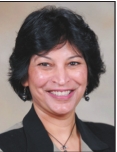HUMAN PAPILLOMAVIRUS (HPV)

Epidemic of human papillomavirus infection in the U.S.
The incidence of human papillomavirus (HPV)-related oropharynx cancer in the back of the throat (i.e., tonsil and base of tongue) has increased by nearly 200 percent. HPV-related oropharynx cancer is five times more frequent in men than in women. From 2006 to 2010, approximately 7,200 men were diagnosed with HPV-associated oropharynx cancer each year. HPVpositive oropharynx cancer will surpass HPV-related cervical cancer by 2020. A reliable screening tool for HPV-associated oropharynx cancer is lacking, which is why having an effective vaccine is so important.
HPV Infection 
The same types of HPV that infect the genital areas can infect the mouth and throat and cause oropharynx cancer. Oropharynx is the area of the throat at the back of the mouth behind the oral cavity, which includes the back of the tongue, the side and back walls of the throat and the tonsils.
HPV type 16 is most frequently associated with cancers of the back of the throat, with almost 70 percent of these cancers being associated with HPV. Multiple studies have observed associations between sexual behavior and HPV infection among men and women. However, not all patients get infected with HPV when exposed to the virus, and not all patients who are infected with HPV get cancer. In most cases, HPV infections of all types go away before they cause cancer. The body fights off the HPV infection naturally, and infected cells go back to normal. Cancer caused by HPV often takes years to develop after getting an HPV infection.
More research is needed to understand all of the factors leading to oropharynx cancers. Dr. Nathan and her research team at LSU Health Shreveport are one of many groups studying associated factors that could lead to HPVassociated head and neck cancer.
HPV Vaccine is a Cancer Prevention Vaccine
HPV vaccines are extremely effective.
The first HPV vaccine was recommended in 2006. Since its institution there has been a 64 percent reduction in vaccinetype HPV infections among teenage girls in the United States and a reduction in cervical cancer, which can be a result of HPV. In September 2010, the Food and Drug Administration (FDA) and the Centers for Disease Control and Prevention (CDC) expanded the recommendations for the HPV vaccine to include vaccinating boys. Despite this recommendation and the potential benefits to women and men, current vaccination rates for U.S. adolescents remain very low. This is especially true for males who had vaccination rates of 1.4 percent in 2010 and who are more frequently diagnosed with HPV-positive oropharynx cancer.
The CDC recommends 11- to 12-yearold boys and girls get two doses of the HPV vaccine to protect against cancers caused by HPV. The second dose should be given six to 12 months after the first dose. The CDC also recommends that girls and women through the age of 26 years old, and boys and men through age 21, get the vaccine if they did not get vaccinated when they were 11 or 12 years old. No serious safety concerns were identified in any of the clinical trials conducted relating to the HPV vaccine.
Cancer Organizations Promote Importance of Vaccine
Primary prevention of the HPV infection through vaccination is the best option for controlling this epidemic of tonsil and back of the tongue cancers in young adult males. With current vaccination rates in the recommended age group so low and this health problem rapidly increasing, many national organizations have come together to promote the HPV vaccine to prevent oropharynx cancers.
The American Academy of Pediatrics, the CDC and the American Academy of Family Practice have teamed up this year to make a strong effort to educate primary care physicians on the importance of giving the HPV vaccine.
Dr. Cherie-Ann Nathan, Jack Pou endowed professor and chairman of the Department of Otolaryngology/ Head and Neck Surgery at LSU Health Shreveport, and director of head and neck surgery at the Feist-Weiller Cancer Center, is on the HPV provider task force for the American Cancer Society and CDC that is educating the public and primary care providers about the association of HPV and head and neck cancer through patient stories. One of Dr. Nathan’s patients, Dr. Scott Vetter, professor at Centenary College, was kind enough to be interviewed by the American Cancer Society. Dr. Vetter’s story can be found on their website at www.cancer.org., where an animated video on the importance of HPV vaccine in boys that Dr. Nathan worked on can also be viewed.
In addition to the task force group, a number of organizations, including the American Association for Cancer Research (AACR) and the American Society of Clinical Oncology (ASCO), have released statements to promote the HPV vaccine for boys.
Dr. Nathan has also served as vice president of the American Head and Neck Society, National Cancer Institute Head and Neck Steering Committee, Head and Neck Alliance Executive Board Member, and Head and Neck Surgery Committee for the Academy of Otolaryngology/Head and Neck Surgery. Each of these societies hopes to decrease the occurrence of head and neck cancer in the future by promoting the vaccine now.
Dr. Cherie-Ann Nathan, LSU Health Shreveport chairman of the Department of Otolaryngology/Head and Neck Surgery, Jack W. Pou, MD, endowed chair, director of head and neck surgery at the Feist-Weiller Cancer Center. To learn more about oropharynx cancer and Dr. Nathan’s work, visit www.feistweiller.
org, The Feist-Weiller Cancer Center is an LSU Health Shreveport Center of Excellence.
